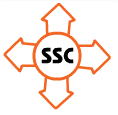What Is Plywood, Timber & Wood Industry Software?
Plywood, Timber, and Wood Industry Software is a specialist category of software solutions developed to meet the specific demands of organizations involved in the manufacturing, processing, and distribution of plywood, timber, and wood products. These software packages are designed primarily to streamline and automate various elements of the wood industry, including as inventory management, production planning, supply chain management, and financial reporting.
One of the key functions of Plywood, Timber, and Wood Industry Software is to provide a consolidated platform for managing all elements of the business, including raw material procurement, inventory tracking, and sales and order management. This not only increases productivity, but also enables for more informed decision-making based on real-time data and insights.
Furthermore, these software solutions provide additional capabilities like production forecasting, batch tracking, and quality control, which are critical for maintaining consistent quality standards and satisfying client expectations. They also help firms optimize their supply chains by automating the purchase process and assuring timely deliveries.
In addition to managing production and logistics, Plywood, Timber & Wood Industry Software provides financial management capabilities adapted to the wood industry's specialized requirements. These include features for recording spending, handling invoices, and generating financial reports, which give firms a complete picture of their financial performance.
As sustainability and environmental responsibility become more essential in the wood sector, several software systems now include tools for tracking and controlling the sourcing of raw materials from sustainable forests. This not only helps businesses function more ethically, but also allows them to demonstrate their environmentally friendly practices to customers.
Overall, Plywood, Timber, and Wood sector Software is a crucial tool for firms seeking to streamline operations, increase efficiency, and remain competitive in the ever-changing wood sector. By automating and streamlining numerous processes, these software solutions can help organizations save time, money, and improve the overall quality of their products and services.
What Are The Recent Trends In Plywood, Timber & Wood Industry Software?
In recent years, the plywood, timber, and wood business has seen an increase in the incorporation of innovative software solutions. These industry-specific software systems strive to automate and optimize a variety of activities, including production, inventory management, customer engagement, and sales.
Let's take a deeper look at some of the most current developments in plywood, lumber, and wood industry software.
1. Digitization & Automation: As with many other businesses, the plywood, timber, and wood industry is adopting digitization and automation. Companies can use specialized software to automate manual operations like inventory management, production planning, and financial management. This enables them to increase efficiency, minimize errors, and save time and money.
2. Cloud-Based Solutions: Another developing trend in plywood, timber, and wood sector software is the adoption of cloud-based solutions. These software platforms provide remote access, real-time data syncing, and scalability, making them perfect for enterprises of any size. Companies that use cloud-based solutions can also save money on their IT infrastructure because the supplier handles software upgrades and maintenance.
3. Data Analysis And Business Intelligence: Data analytics and business intelligence solutions are gaining popularity in the plywood, timber, and wood industries. These software platforms provide significant insights into manufacturing processes, customer behaviour, and market trends by gathering and analysing data from a variety of sources. This enables businesses to make more informed decisions and increase their overall efficiency.
4. Mobile Applications: With the increased use of mobile devices, several software suppliers in the plywood, timber, and wood industries are creating mobile apps. These mobile apps enable employees to access essential data, complete tasks, and connect with coworkers while on the go. This significantly increases productivity and allows businesses to stay connected to their activities at all times.
5. Customer Relationship Management: In today's competitive corporate environment, customer relationship management (CRM) is critical. CRM capabilities including lead tracking, customer communication, and sales forecasting are now available in software systems for the plywood, timber, and wood industries. This helps businesses enhance customer service and increase sales.
6. Integration Of Industry Standards: To comply with industry norms and regulations, businesses must guarantee that their software solutions meet these requirements. In response to this need, several plywood, timber, and wood sector software systems now integrate with industry-specific standards such as the Sustainable Forestry Initiative (SFI) and the Forest Stewardship Council (FSC).
Benefits Of Using Plywood, Timber & Wood Industry Software
Plywood, lumber, and wood are critical commodities in the construction and furnishing sectors, with a global market value over $500 billion. To remain competitive in this fast increasing industry, businesses must implement current technologies to streamline procedures and boost efficiency. One such technology is the usage of customized software created exclusively for the plywood, lumber, and wood industries.
Here are the main advantages of adopting plywood, lumber, and wood industry software:
1. Improved Inventory Management: One of the most significant benefits of employing industry-specific software is better inventory management. These software solutions include capabilities such as real-time tracking, automatic data entry, and customisable inventory reports, which make businesses easier to monitor stock levels and manage orders. This not only saves time, but also minimizes the likelihood of supply shortages and overstocking, resulting in cost savings and greater profitability.
2. Improved Manufacturing Planning: Timber and wood products come in a variety of grades and sizes, making it difficult to manage a manufacturing line that meets these demands. Production planning is more efficient and coordinated when using industry-specific tools. These technologies enable businesses to plan production depending on available raw resources, manufacturing capacity, and client demand. This ensures that the proper items are produced at the right time, resulting in increased customer satisfaction and revenues.
3. Streamlined Sales And Distribution: The plywood, timber, and wood industries frequently require huge volumes of materials and intricate supply chains. Using industry-specific software can help businesses optimize their sales and distribution processes by automating procedures like order processing, invoicing, and shipment tracking. This not only minimizes the possibility of human error, but also increases efficiency and speed, resulting in higher customer satisfaction and profitability.
4. Improved Cost Management: Market prices for plywood, lumber, and wood fluctuate, making it difficult to sustain profitability. Businesses can use specialized software to precisely track expenditures and production expenses, allowing them to make educated decisions and negotiate with suppliers and consumers. Furthermore, these solutions include budgeting and forecasting features, allowing businesses to plan and allocate resources more effectively.
5. Compliance With Industry Standards And Rules: The plywood, timber, and wood industries are subject to a variety of rules and standards, including those governing sustainable sourcing and workplace safety. Industry-specific software solutions are intended to comply with these requirements, ensuring that businesses operate in compliance with industry standards. This not only helps businesses avoid penalties and legal concerns, but it also boosts their reputation and attracts new clients.
Important Factors To Consider While Purchasing Plywood, Timber & Wood Industry Software?
When it comes to choosing Plywood, Timber, and Wood Industry Software, several crucial criteria must be examined in order to make an educated purchase. Every aspect of the program, from its features and operation to the vendor's reliability and support, is important.
Here are some important aspects to consider while selecting Plywood, Timber, and Wood Industry Software.
1. Industry-Specific Features: The first and most important consideration is whether or not the software is specifically built for the plywood, timber, and wood industries. It should have capabilities tailored to this industry's specific demands and operations, such as inventory management, production scheduling, and sawmill optimization.
2. Integration Capability: The software should be able to integrate with existing systems and tools in your company, such as accounting software, ERP systems, and machine controls. This provides smooth data flow and removes the need for manual data entry, thereby saving time and eliminating errors.
3. User-Friendly Interface: Because not all employees are technologically knowledgeable, it is critical to select software with an easy-to-use interface. This will make it easier for employees to adapt and use the program successfully, leading to enhanced productivity and efficiency.
4. Modification Choices: Each organization has distinct requirements, and the software should provide modification choices to meet those demands. This could include customisable reports, interfaces, and settings that can be adjusted to your specific business processes.
5. Technical Help: In the event of any problems or concerns, it is critical to have dependable technical help from the vendor. Look for software vendors who give 24-hour customer assistance, as well as training and tools to enable a seamless deployment and use.
6. Security And Data Protection: The software should provide suitable security features to secure your business data and prevent unauthorized access. This is especially critical when working with sensitive data like client information and financial records.
7. Scalability: As your firm expands, your software requirements may alter. As a result, it is critical to select software that is scalable and capable of supporting your company's growth.
8. Cost: The cost of the program should be considered, but it should not be the decisive factor. Look for software that strikes a fair balance between functionality and price, and remember to factor in long-term costs like maintenance and updates.
Consider these crucial factors when selecting Plywood, Timber, and Wood Industry Software to ensure that you make an informed purchase that matches your company's specific needs and helps you stay ahead of the competition.
What Are The Key Features To Look For In Plywood, Timber & Wood Industry Software?
When searching for Plywood, Timber, and Wood Industry Software, it is critical to examine the features that will best fit the demands of your company.
Here are the main qualities to look for:
1. inventories Management: Managing inventories is a major difficulty in the wood sector. Look for software that has features like real-time stock level tracking, barcode scanning for quick inventory counting, and automated reorder alerts to prevent supply shortages.
2. Production Planning: Efficient production planning is critical for wood-related businesses. Make sure the software you chose can generate production schedules, track production progress, and detect bottlenecks in the manufacturing process.
3. Resource Management: Timber and wood enterprises frequently work with a diverse range of resources, including raw materials, equipment, and labor. The program should include capabilities that allow you to properly manage and allocate these resources, resulting in maximum utilization and reduced waste.
4. Quality Control: To ensure a high-quality end product, thorough quality control measures must be implemented. To optimize production processes and reduce errors, look for software that includes quality control capabilities like testing and inspection, result documentation, and quality issue monitoring.
5. Customer Relationship Management (CRM): An effective CRM component is essential for handling customer orders, tracking customer interactions, and assuring timely product delivery. Choose software that facilitates customer interactions and serves as a centralized repository for all customer-related data.
6. Financial Management: Businesses in the wood sector handle a vast quantity of financial data, from material purchases to payroll management. The program should have strong financial management capabilities, such as budgeting, invoicing, and accurate cost tracking.
7. Reporting And Analytics: Real-time access to data and analytics is critical for making informed business decisions. Look for software that can provide personalized reports and dashboards to measure key performance indicators and discover opportunities for development.
Keep in mind that these are just a few of the important factors to consider while selecting Plywood, Timber, and Wood Industry Software. To guarantee a seamless and effective installation, consider the software's usability, compatibility with your existing systems, and customer support.
Why Do Businesses Need Plywood, Timber & Wood Industry Software?
The plywood, timber, and wood sectors are critical to our economy, providing raw materials for a wide range of products. However, operating a firm in this area can be complicated and difficult. This is where the plywood, lumber, and wood industry software come in. Efficiency is essential for success in any firm. Businesses can use plywood, timber, and wood industry software to streamline processes, decrease manual labor, and boost production.
This software automates a variety of activities, including inventory management, order tracking, and production planning, saving firms time and resources. Furthermore, plywood, timber, and wood sector software offers real-time data and analytics, enabling firms to make informed decisions. The software monitors key performance indicators, identifies areas for improvement, and optimizes supply chain management.
This data-driven approach helps organizations remain competitive in a continually changing industry. Wood industry software includes a variety of specialized capabilities, such as grading and sorting modules, production scheduling, and logistics management. These features are designed to fulfill the industry's specific needs, allowing organizations to operate to their full potential. Furthermore, the software enables organizations to comply with industry norms and standards.
With features like barcode scanning, quality control, and traceability, organizations can assure product quality and safety, stay compliant with regulations, and fulfill customer expectations. In today's digital world, a strong online presence is essential for businesses. Plywood, timber, and wood industry software all provide e-commerce connectivity, allowing enterprises to reach a larger consumer base and enhance revenue.
How Much Time Is Required To Implement Plywood, Timber & Wood Industry Software?
The time required to deploy plywood, lumber, and wood industry software varies according to a number of factors. It is vital to remember that the implementation process might be extensive and consists of numerous stages. However, the benefits of implementing an efficient and successful software system far outweigh the effort spent.
1. Assessment And Planning Phase: Before installing any software, you should examine your company's specific needs and requirements. This initial phase can last anywhere from a few days to a few weeks, depending on the intricacy of your activities. During this phase, you will work closely with the software supplier to tailor the program to your specific business requirements.
2. Customization And Configuration: After thoroughly assessing the software, the next step is to adapt and configure it to fit your company procedures. This includes implementing features and workflows, moving data, and integrating any current software systems. The duration of this phase might range from a few weeks to a few months, depending on the size and complexity of your organization.
3. Training And Testing: As with any software implementation, it is critical to teach your staff how to use the new system successfully. This can take anything from a few days to a few weeks, depending on how sophisticated the software is. During this phase, it is critical to thoroughly test the software to ensure that it works properly and fits your company needs.
4. Go-Live And Post-Implementation Support: After training and testing, the program is ready to go live. This stage might last from a few days to a few weeks, depending on the size of your company and the amount of data to be migrated. Once the software is up and running, the provider will offer post-implementation support to address any difficulties or questions that may occur.
What Is The Level Of Customization Available In Plywood, Timber & Wood Industry Software?
When choosing plywood, timber, and wood industry software, one crucial consideration is the level of customisation available. This refers to the capacity to modify the software to your company's specific demands and processes. These types of software offer a wide range of customizing options. Some may provide only a few basic customization options, whereas others provide considerable customization features. In general, the more adaptable the software, the better it will adapt to your business's operations and workflow. So, what precisely is customizable in plywood, lumber, and wood sector software?
Here are some crucial points to consider:
1. User Interface: The user interface, or the visual design and layout of the software, can frequently be altered to some degree. This may involve changing the color palette, adding or removing specific features, and rearranging the layout to your liking.
2. Workflow: Depending on the program, you may be able to tailor the workflow to the specific processes and procedures of your company. This can help to streamline operations and increase efficiency.
3. Data Management: Customization options for data management may include the ability to create custom fields, add or remove data points, and generate bespoke reports and dashboards.
4. Integrations: Some software may have integrations with other products or systems that your company employs. This can lead to a more smooth and individualized experience.
5. Permissions And Access: In larger organizations, it may be required to assign multiple degrees of permissions and access to different individuals. Customization options may include the ability to form user groups, limit access to specific functions, and assign specific roles and responsibilities.
When determining the extent of customization in plywood, timber, and wood industry software, you must evaluate your company's individual demands and requirements. Examine the customisation options offered and assess whether they are compatible with your business operations and goals. This will ensure that you invest in a software solution that will actually assist your company and improve its operations.
Which Industries Can Benefit The Most From Plywood, Timber & Wood Industry Software?
Plywood, timber, and wood industry software has quickly become a must-have tool for firms that work with wood-based commodities. This specialist software has a variety of features and capabilities that are intended to improve efficiency, productivity, and profitability for businesses that manufacture, distribute, and sell plywood, lumber, and other wood-based products. But which industries will profit the most from using this type of software? Let's get a closer look.
1. Manufacturing Industry: From sawmills to plywood mills, manufacturing is at the heart of the plywood, timber, and wood industries. These companies can considerably benefit from employing industry-specific software to automate procedures, streamline production, manage inventory, and track orders. This software's real-time data and insights enable manufacturers to make informed decisions and streamline processes, ultimately enhancing their bottom line.
2. Construction Sector: The construction sector is a significant user of plywood, timber, and wood products. Using specialized software can help construction organizations enhance project planning and administration, allow effective contact with suppliers, and assure proper inventory tracking to avoid material shortages or overstocking. Furthermore, this software can help construction organizations track the quality of the materials used in their projects, assuring compliance with rules and safety standards.
3. Retail Industry: Implementing industry-specific software can considerably help retailers who sell plywood, lumber, and wood-based items. It can provide comprehensive inventory management tools including low stock notifications and real-time stock tracking to assist shops in optimizing their supply chain and avoiding stock outs. This software can also help with sales tracking, customer relationship management, and creating detailed reports to help businesses make better decisions.
4. Wholesale And Distribution: Wholesalers and distributors play important roles in the plywood, timber, and wood industries, transferring items from manufacturers to retailers and customers. These organizations may manage their logistics, shipping, and delivery procedures more efficiently by using specialized software. Automated inventory management and real-time tracking capabilities can also assist wholesalers and distributors in maintaining proper stock levels and fulfilling orders on time, hence enhancing customer satisfaction and retention.
5. Forestry Sector: The forestry sector provides raw resources for the manufacture of plywood, lumber, and wood goods. Installing industry-specific software can give forestry companies with significant insights into their operations, allowing them to improve harvesting, manage land resources, and practice sustainability. Furthermore, this program may help you track and manage tree growth cycles, ensuring that resources are used efficiently and production is maximized.
Conclusion
To summarize, investing in the correct software for your plywood, timber, and wood industry can significantly enhance operations, increase efficiency, and boost overall profitability. Before making a decision, you should thoroughly analyze your individual objectives and requirements, as well as the features and capabilities of each software solution.Based on our research and analysis, we believe that the most important features to look for in Plywood, Timber, and Wood Industry software are inventory management, production planning, sales and order monitoring, and reporting and analytics.
Furthermore, it is critical to ensure that the software works properly with your existing systems and provides adequate customer support and training. Before committing to a software, we strongly advise you to investigate many possibilities, assess their benefits and shortcomings, and seek demos or free trials to gain hands-on experience.
Consider the long-term benefits and ROI while calculating the software's cost. Using this buyer's guide, we hope you can make an informed selection that will benefit your business and help it survive in the extremely competitive Plywood, Timber, and Wood Industry. Remember to monitor and analyze your software requirements as your firm grows and evolves. Thank you for reading, and best wishes in your software hunt!
















